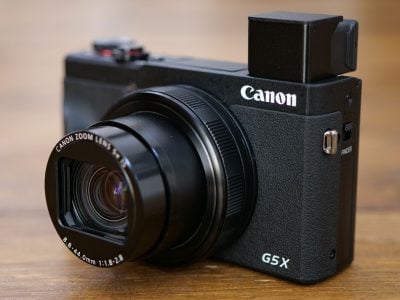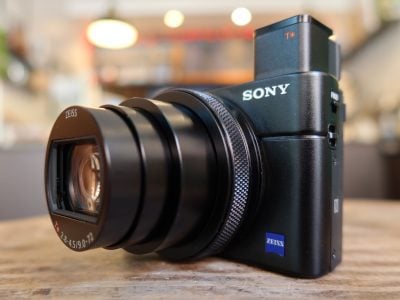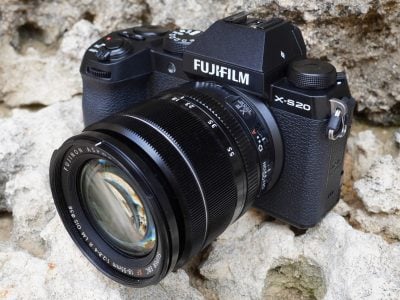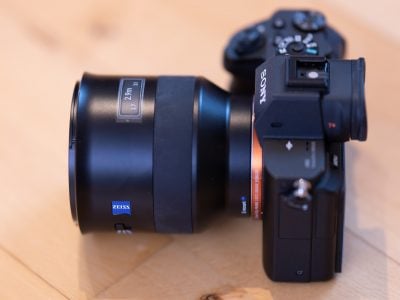Zeiss Batis 40mm f2 CF review
-
-
Written by Thomas
Verdict
The 40mm f2.0 CF is the latest addition to the Zeiss Batis line of autofocus prime lenses designed for Sony E-mount cameras with full-frame or APS-C sensors. Like all other lenses of this series it features an OLED display for distance and dof. But its ability for close focus down to a magnification of almost 1:3 makes it stand out from its Zeiss siblings and also from other large aperture primes. In my tests the Zeiss Batis 40mm f2.0 CF proved to be very sharp across the full-frame sensor in close quarters and at longer distances, has almost no color aberrations, and produces only little coma. This performance comes in a sleek looking and well-sealed package that is comparably light and small.
But the lens is not without flaws. The most obvious being the quality of its Bokeh and the light gathering power of its f2.0 focal ratio. Both cannot compete with f1.4 lenses. And then there is the price of 1300 EUR/USD which does not even include a lens pouch.
Let’s put this into perspective and have a closer look at how the Zeiss Batis 40mm f2.0 CF compares to some alternatives.
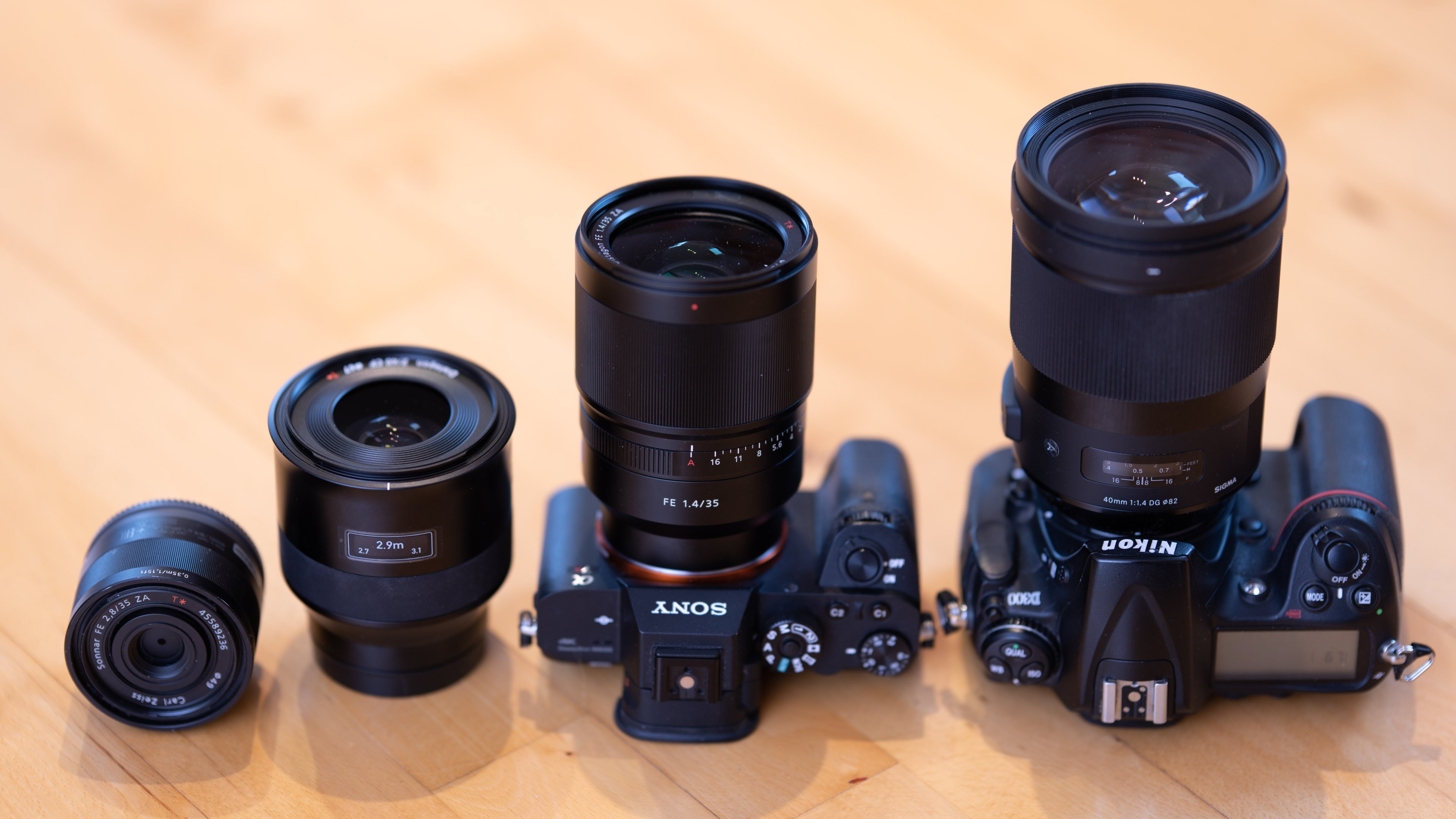
Above from left to right: Sony 35mm f2.8 ZA, Zeiss Batis 40mm f2.0, Sony 35mm f1.4 ZA, Sigma 40mm f1.4 Art
Compared to Sigma 40mm f1.4 Art
The Sigma 40mm f1.4 Art is similarly priced as the Zeiss Batis although it offers a one stop larger focal ratio of f1.4. My testing revealed that the optical performance of the Sigma 40mm f1.4 Art is near flawless making it one of the best in the Art line: It is sharper across the full-frame sensor in close quarters than the Zeiss Batis although at longer distances it has a slightly softer APS-C-corner at f2.0. The Sigma Art also has almost no color aberrations and no coma to speak of. Owing to its larger f1.4 focal ratio the Sigma Art produces a much nicer Bokeh rendering the background pleasantly blurred plus its resistance against flare and glare in strong contra light is better than from the Zeiss Batis. The only optical weakness of the Sigma Art is the focus shift when stopped down from f1.4 to f2.0. But this is only a problem when using the lens on a DSLR body in phase-detect AF. The real let-down of the Sigma Art is its size and weight: At a total length (incl. lens hood) of almost 21cm and a weight of around 1.3kg the Sigma Art dwarfs the Zeiss Batis. But if you want the very best optical performance the Sigma 40mm f1.4 Art is hard to beat!
For more details see my Sigma 40mm f1.4 Art review where it earned a Highly Recommended.
Compared to Sony 35mm f1.4 ZA
The Sony 35mm f1.4 ZA is a Zeiss design from 2015 and only available in E-mount. It’s not a small lens either with a total length of 15cm including lens hood and a weight almost 300g heavier than the Zeiss Batis. Optically the Sony ZA is good and its Bokeh is clearly better than from the Zeiss Batis, plus it’s a stop brighter. But it is not as sharp as the Zeiss Batis towards the corners, produces visible color aberrations, and does not offer the same close-up abilities. The Sony ZA also commands a 200 EUR/USD higher price than the Zeiss Batis. It offers an aperture ring with 1/3 stop clicks which can be turned off for continuous, smooth, and noise-free operation, but it lacks a display of distance and dof. With its 35mm focal length it captures a slightly wider field of view than the Zeiss Batis which might be a bonus in tight spaces or when shooting architecture or landscapes. So if you value the extra stop in aperture, the more attractive Bokeh plus the slightly wider focal length the Sony 35mm f1.4 ZA might be a viable alternative.
For more details see my Sony 35mm f1.4 ZA review.
Compared to Sony 35mm f2.8 ZA
Ahead of my full review I was able to shoot the Sony 35mm f2.8 ZA at the same time as the Zeiss Batis 40mm f2.0 CF. The Sony 35mm f2.8 ZA is an interesting alternative for people who want an extremely small and light 35mm lens for their E-mount Sony camera. But naturally the slower focal ratio of f2.8 not only means one stop less light gathering power but also less potential to blur the out-of-focus regions. The Sony ZA also offers only a meager magnification of 1:7.5. Optically it is the least sharp in this comparison. But it’s also the cheapest of the four lenses compared here, although at 700 EUR / 750 USD it still costs a pretty penny – and there’s a much cheaper alternative: the Samyang AF 35mm f2.8 FE.
Check back soon for my Sony 35mm f2.8 ZA review.
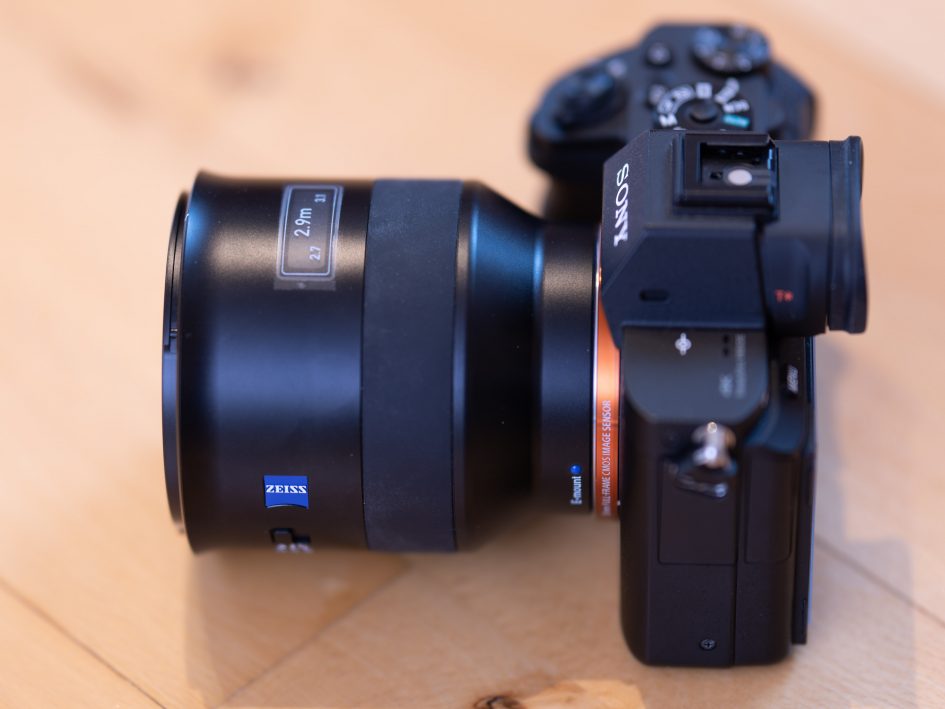
Zeiss Batis 40mm f2.0 CF final verdict
If you can live with the less than optimal Bokeh, the Zeiss Batis 40mm f2.0 CF is an attractive lens: It is sharp into the corners of a full-frame sensor, has very low color aberrations and only little coma, and offers a very attractive close focus ability. Combined with very moderate size and weight plus thorough weather-sealing and solid build quality the Zeiss Batis 40mm f2.0 CF earns a Highly Recommended!
Good points:
- Small and light.
- Very good resolution and contrast.
- Great close-up performance.
- Extensive weather sealing against moist and dust.
- Very fast and reliable AF operation.
Bad points:
- Resistance against flare and glare could be better
- Bokeh suffers from onion-rings and outlining.
- No lens pouch.
Check prices on the Zeiss Batis 40mm f2 at Amazon, B&H, Adorama or WEX! Alternatively get yourself a copy of my In Camera book or treat me to a coffee! Thanks!
